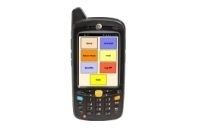Retail Theft is Evolving: 3 Tech-Driven Strategies to Stay Ahead
Retail theft is not a new problem. However, it’s rapidly growing and evolving, especially since the pandemic. According to estimates, Canadian retailers have lost $9.1 billion to theft in 2024, an 82% increase from 2018.
U.S. retailers’ median inventory shrinkage percentage is 1.4%, up from 1% in 2018. Experts estimate that as many as 33% of corporate bankruptcies are linked to theft.
In today’s world, traditional security measures are not enough to stop retail theft. Guards and cameras alone cannot solve the problem. Instead, retailers must take a proactive approach to reverse losses led by external and internal theft.
In this blog, we look at key trends in retail theft. We also discuss how using technology in your retail security can help reduce losses.
A closer look at the current retail theft landscape
- Shoplifting is on the rise. According to research, there’s been a 93% increase in shoplifting cases since 2019, with retailers’ dollar losses rising by 90%. Interestingly, stores catch shoplifters only 2.0% of the time.
- Organized retail theft (ORT) is massively shrinking stocks. According to research by the National Retail Federation (NRF), 37% of stock shrinkage results from ORT. 38% of this ORT occurs in-store.
ORT refers to coordinated efforts by professional crime rings that systematically target retailers. These groups steal high-value items and resell them through online marketplaces, illicit supply chains, and sometimes even back to unsuspecting retailers.
Their tactics range from cargo theft and smash-and-grab attacks to sophisticated forms like digital POS frauds, fraudulent returns, and coordinated flash mob-style thefts, where these groups coordinate thefts through social media, overwhelming store security. In one recent instance, a “flash mob burglary” event in Glendale, 30 thieves stole $300,000 worth of merchandise from an Yves St Laurent store.
- With ORT, there are also rising concerns about employee and customer safety. According to a survey, about 45 percent of retailers in the United States have reduced the operating hours of specific stores, and 28 percent have closed outlets in certain locations due to retail crime, disorder, or violence.
- Cargo theft is the predominant form of ORT. In fact, 58% of organized retail crime is attributed to cargo theft. The main locations for this kind of theft are at third-party centers, from distribution centers to warehouses, and even stores.
- Return fraud is rising. 37.9% of retailers have reported increased return fraud incidents over 5 years. Approximately 8% of all returns are fraudulent, accounting for about $25 billion in annual theft.
It’s been estimated that the United States has lost a staggering $4.743 billion in taxes to retail return fraud.
- Employee theft is straining retailer revenues. Also known as internal theft, this type of theft affects as many as 95% of businesses and costs retailers about 5% of their revenues.
Unlike external theft, which is opportunistic, employee theft is often systematic. Employees who understand store operations exploit weaknesses in inventory tracking, cash handling, or discounting systems. Popular methods include under-ringing items for friends, stealing cash from registers, manipulating refunds by creating false transactions and pocketing the refund money, or stealing merchandise directly from stockrooms.
- The convenience of self-checkout is becoming costly. According to a study, 15% of self-checkout users have confessed to purposely stealing. Customers and employees are both culprits in exploiting self-checkout system vulnerabilities, for instance, by skipping barcode scans or manipulating weight-based verification.
Why traditional loss prevention methods are not enough
While using surveillance cameras, employing guards, and conducting manual audits provide some deterrence against various forms of theft in trend today, it’s essential to note that these are reactive measures. In other words, they do not help to prevent theft.
Today, with sophisticated forms of theft on the rise, companies must step in proactively to reverse the trend. The way ahead lies in adopting a modern, data-driven approach to identifying fraud patterns and preventing theft. Modern technology provides the answer to overcoming the limitations of legacy approaches that fail to provide visibility across locations at the right time, often giving the culprits an advantage.
How technology strengthens retail loss prevention strategy
Some applications of leveraging technology to prevent retail theft are:
- A data-driven defense, involving retail-specific ERP, POS, and WMS
Technology unlocks real-time monitoring and fraud detection capabilities for organizations like yours. By leveraging state-of-the-art ERP, POS, and WMS built for retailers, you can create a solid line of defense with increased visibility into your inventory and transactions.
Retail ERP software can help detect real-time inventory and sales data discrepancies and immediately spotlight notable variances. Tracking POS analytics can help monitor recorded transactions easily for anomalies. Studying this data can uncover unusual voids, discounts, or cash refund-related frauds.
RECENT POSTS
 Magstar Voted a Top Software Vendor on the 2024 RIS Software LeaderBoardRetail theft is not a new problem. However, it’s [...]
Magstar Voted a Top Software Vendor on the 2024 RIS Software LeaderBoardRetail theft is not a new problem. However, it’s [...] Magstar Mobile POS showcased at NRF 2014Total mPOS (Point of Sale) was showcased at NRF [...]
Magstar Mobile POS showcased at NRF 2014Total mPOS (Point of Sale) was showcased at NRF [...] RIS Retail Software Leaderboard 2015 Recognizes Magstar Inc as a Top Provider of Retail SoftwareMagstar places Top 5 on the RIS Retail Software [...]
RIS Retail Software Leaderboard 2015 Recognizes Magstar Inc as a Top Provider of Retail SoftwareMagstar places Top 5 on the RIS Retail Software [...]